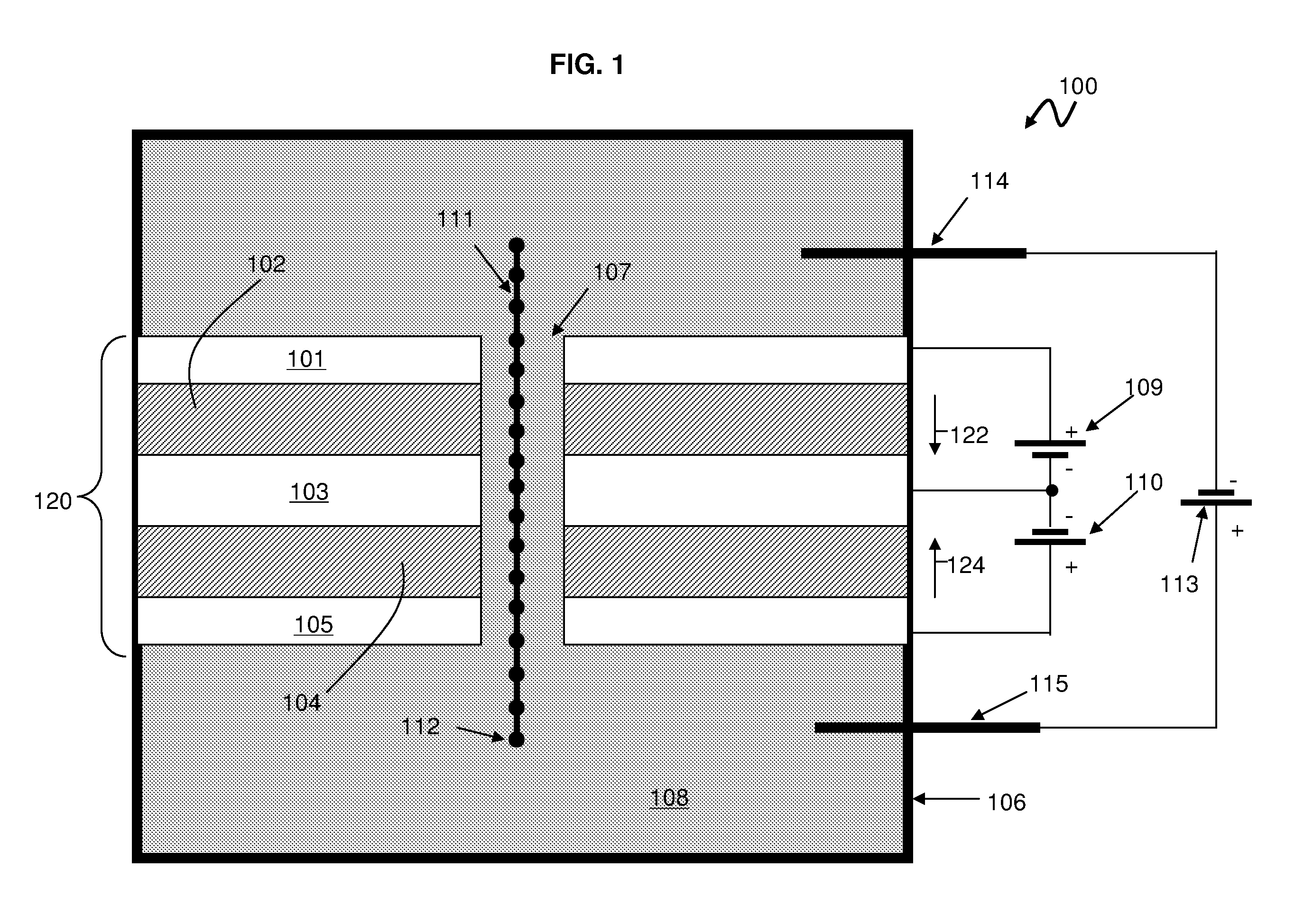Nanopore Based Device for Cutting Long DNA Molecules into Fragments
- Summary
- Abstract
- Description
- Claims
- Application Information
AI Technical Summary
Benefits of technology
Problems solved by technology
Method used
Image
Examples
Embodiment Construction
Exemplary embodiments provide a method and mechanism to perform DNA restriction, which is a process whereby a long DNA molecule is cut into shorter fragments.
Unlike exemplary embodiments, conventional fragmentation methods can be physical (e.g., nebulization, sonication and hydrodynamic shearing) or enzymatic. Enzymatic restriction is achieved using an enzyme that recognizes and cuts DNA molecules at specific sequence patterns (restriction sites). DNA restriction is routinely used in preparation of samples. Many applications such as chip-on-chip and DNA sequencing, from the original Sanger sequencing to most large-scale DNA sequencing strategies, require the fragmentation of the DNA to be sequenced for sub-cloning and further processing. In these applications, a long DNA molecule containing tens of thousands of bases must be cut into shorter fragments with a typical length of 100 to 1000 bases. Both in the physical as well as enzymatic fragmentation methods DNA fragments have a vari...
PUM
| Property | Measurement | Unit |
|---|---|---|
| Length | aaaaa | aaaaa |
| Electric potential / voltage | aaaaa | aaaaa |
| Stretching force | aaaaa | aaaaa |
Abstract
Description
Claims
Application Information
 Login to View More
Login to View More - R&D
- Intellectual Property
- Life Sciences
- Materials
- Tech Scout
- Unparalleled Data Quality
- Higher Quality Content
- 60% Fewer Hallucinations
Browse by: Latest US Patents, China's latest patents, Technical Efficacy Thesaurus, Application Domain, Technology Topic, Popular Technical Reports.
© 2025 PatSnap. All rights reserved.Legal|Privacy policy|Modern Slavery Act Transparency Statement|Sitemap|About US| Contact US: help@patsnap.com



